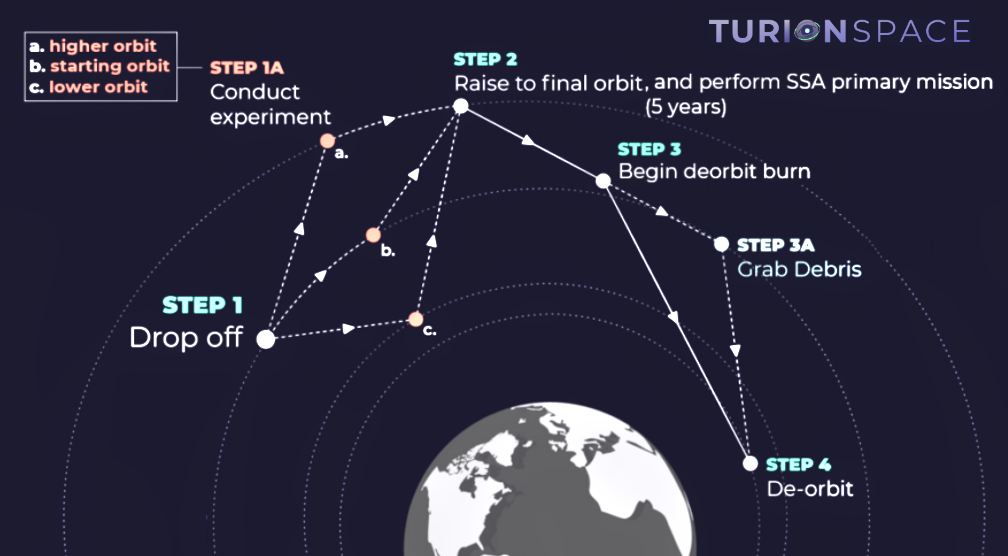
Turion Space has secured U.S. regulatory approval to sell space situational awareness (SSA) services from their first satellite that is scheduled to lauch next year.
SpaceX is slated to fly the company’s Droid.001 satellite on a Falcon 9 rideshare mission, Turion Space CEO Ryan Westerdahl said.
Lithuania-based NanoAvionics built the bus for the satellite, which will provide imagery for Australian on-orbit inspection startup, HEO Robotics, Turion Space’s first customer.
Droid.001’s primary mission, however, is to test imagery capabilities that Westerdahl declined to specify for an SSA business he sees as a stepping stone toward more direct, on-orbit services.
After deploying three to four more SSA-focused Droids by around mid-2024, he said the firm’s plans to test a vision system for autonomous rendezvous operations with one of its spacecraft already in LEO. Westerdahl ultimately envisions a constellation of Droids that can be tasked to provide services as needed. When that mission is over, they would return to their “home orbit” to track objects in space until they are called upon again for another project.
Turion Space has raised $7.5 million in venture capital, the company CEO said covers the firm’s first two satellites, with the second satellite to be deployed in the fourth quarter of 2023, although a launch provider has not yet been identified.
Earlier this year, Turion Space secured four contracts worth a combined $1 million from the U.S. Space Force’s Orbital Prime program, which will support the development of the company’s on-orbit logistics capabilities. Orbital Prime launched last year to focus on emerging on-orbit servicing, assembly and manufacturing capabilities.
“By 2025, we want to do our first docking and de-orbit demonstration,” said Westerdahl. “We’re an early-stage startup and we don’t necessarily know how big our constellation is going to be yet. All I can tell you with certainty for now is we’re going to build as many as we can, as fast as we can without spending all our money and without going bankrupt. Although we think in-space logistics is a market primed for takeoff, we are prioritizing moving fast and deploying revenue generating assets early to maximize learning and market traction.”
Westerdahl said the startup is using funds raised from government contracts for research and development on the logistics side of its business, as well as finding ways to expand its SSA capabilities.
Money raised from venture capital investors is supporting an SSA-focused commercial business, which would use early satellites that are not going to be focused on space logistics.
